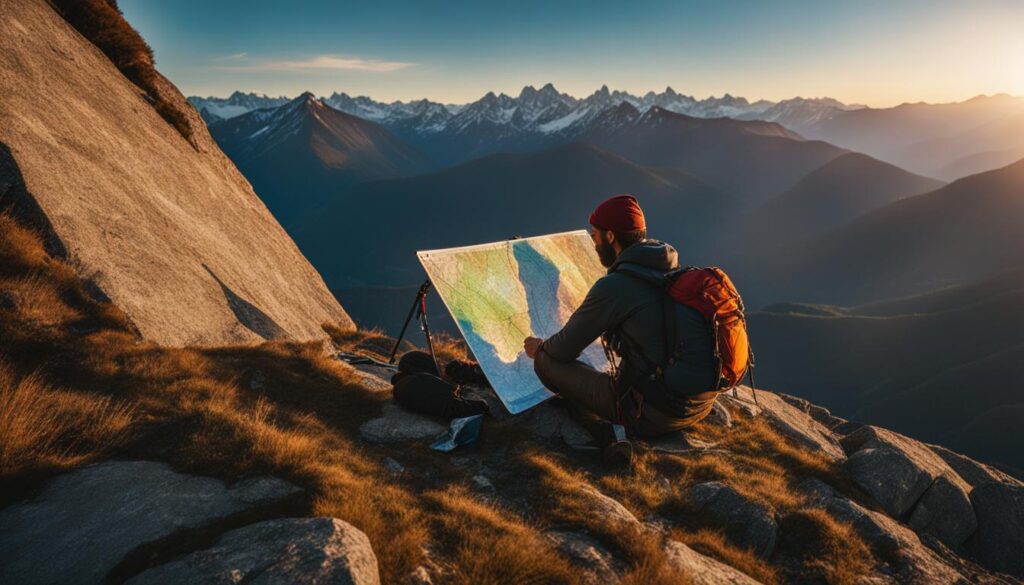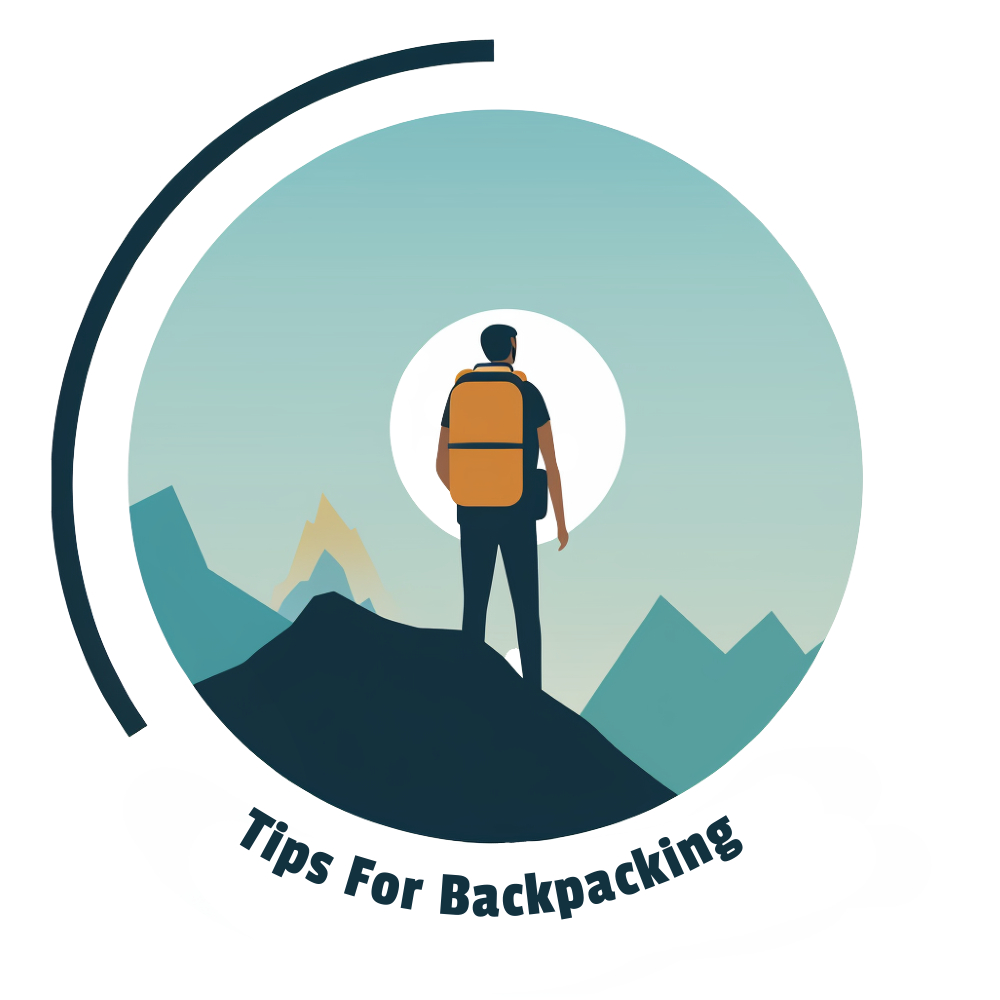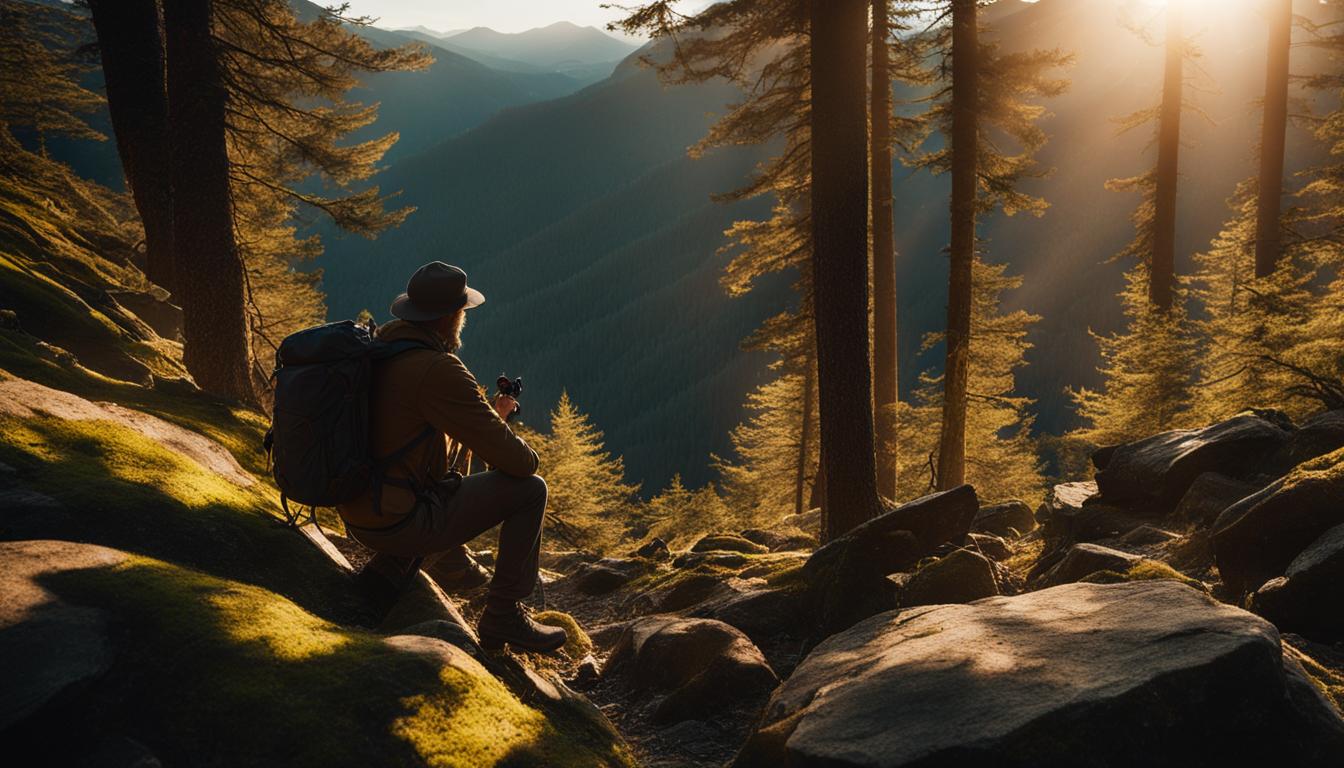Master the art of navigating with a compass and map to ensure you never get lost while backpacking. Develop wilderness navigation techniques and learn basic GPS skills to enhance your navigation skills. Understand how to read topographic maps for backpacking trips.
Key Takeaways:
- Wilderness navigation techniques are crucial for backpackers to stay safe and avoid getting lost.
- Basic GPS skills can help enhance navigation by pinpointing locations and creating routes.
- Reading topographic maps is essential for understanding elevation changes and identifying terrain features.
- Mastering navigation skills allows backpackers to confidently explore off-trail areas.
- By practicing navigation techniques, backpackers can make the most of their outdoor adventures.
The Importance of Navigation Skills in Backpacking
When it comes to backpacking, navigation skills are of utmost importance. As a backpacker, mastering navigation skills can offer a myriad of benefits, allowing you to confidently explore off-trail areas and make the most of your outdoor adventures. One of the primary benefits of navigating with skill is the ability to stay safe and avoid getting lost in unfamiliar and remote terrain.
By honing your navigation skills, you can unlock the ability to venture into untracked wilderness areas, experiencing the solitude and beauty that they offer. Navigating off-trail allows you to discover hidden gems that are often missed by those who stick to well-marked paths. It grants you the freedom to forge your own path and embark on unique and memorable journeys.
Additionally, mastering navigation skills enables you to have a deeper connection with nature. As you navigate the wilderness using a compass and map, you become more attuned to your surroundings and develop a heightened sense of awareness. This connection with the environment enhances the overall backpacking experience, providing opportunities for personal growth and self-discovery.
The ability to navigate off-trail opens up a world of possibilities for backpackers, offering a sense of adventure and exploration that simply cannot be replicated by following established paths.
Ultimately, navigation skills are not only about finding your way from point A to point B, but they are also about embracing the spirit of adventure and immersing yourself fully in the wonders of the natural world. So, whether you’re a seasoned backpacker or a novice, investing time and effort into mastering navigation skills will undoubtedly elevate your backpacking experiences to new heights.
| Benefits of Mastering Navigation Skills |
|---|
| Confident exploration of off-trail areas |
| Enhanced safety and avoidance of getting lost |
| Discovery of hidden gems and untracked wilderness |
| Deeper connection with nature |
| Opportunities for personal growth and self-discovery |
Using a Compass and Map for Backpacking Navigation

When venturing into the wilderness, mastering the use of a compass and map is essential for navigation. These tools provide a reliable and effective way to navigate through unfamiliar terrain and ensure you stay on track during your backpacking trips. In this section, I will guide you through the basic techniques of using a compass and map for backpacking navigation.
Orienting the Map
The first step in using a compass and map is to orient the map to match the surrounding landscape. To do this, lay the map flat on a stable surface and identify prominent features such as mountains, lakes, or rivers. Next, align the map with the actual landscape by rotating it until the north indicator on the map matches the magnetic north indicated by your compass. Once the map is properly oriented, you can accurately interpret the information it provides.
Finding a Bearing
A bearing is a specific direction you need to follow to reach your destination. To find a bearing, hold the compass flat in your hand and align the direction of travel arrow with your destination on the map. Rotate the compass housing until the magnetic needle is aligned with the orienting arrow. The number indicated by the index line on the compass housing is your bearing. Remember to account for the declination angle, which is the difference between true north and magnetic north in your area. Adjust the bearing accordingly to ensure accuracy.
Following a Bearing
Once you have determined your bearing, it’s time to follow it on the ground. Hold the compass in front of you, keeping it level and aligned with your bearing. Rotate your body until the magnetic needle aligns with the orienting arrow, ensuring the direction of travel arrow points straight ahead. While walking, periodically check your compass to ensure you stay on course. This technique will help you navigate accurately and reach your destination without veering off track.
In conclusion, mastering the use of a compass and map is crucial for successful backpacking navigation. By orienting the map, finding a bearing, and following it on the ground, you can confidently explore the wilderness and reach your destination with ease. These skills provide a reliable backup in case of GPS failure or limited battery life. So, before your next backpacking adventure, be sure to brush up on your compass and map navigation techniques.
Basic GPS Skills for Backpackers
When it comes to backpacking navigation, having basic GPS skills can greatly enhance your outdoor experience. A GPS device can provide you with accurate location information, help you create waypoints, and guide you along pre-planned routes. Let’s explore the essential GPS navigation techniques that every backpacker should know.
Using a GPS device for navigation starts with pinpointing your location. This is particularly useful when you’re in unfamiliar territory or when visibility is poor. By accessing satellite signals, a GPS device can determine your exact coordinates, allowing you to confidently plan your next move.
Once you know your location, you can create waypoints. These are specific points of interest that you can mark on your GPS device. For example, you can mark the location of your campsite, a water source, or a scenic viewpoint. By creating waypoints, you can easily navigate back to these important locations.
In addition to creating waypoints, a GPS device can guide you along pre-planned routes. This is especially beneficial when you want to follow established trails or when you’re embarking on a multi-day backpacking trip with a set itinerary. By following the route on your GPS device, you can stay on track and avoid unnecessary detours.
GPS Navigation Techniques:
To make the most of your GPS device, it’s important to familiarize yourself with a few key navigation techniques. Firstly, calibrating your GPS is crucial to ensure accurate readings. This involves adjusting the device to match the true north by accounting for magnetic declination.
Another important technique is managing battery life. GPS devices consume energy, so it’s essential to carry spare batteries or have a charging plan in place. Remember to turn off unnecessary features or reduce the screen brightness to conserve battery power.
Lastly, understanding how to interpret and use the various features on your GPS device is vital. Familiarize yourself with the user interface, learn how to navigate through menus, and practice using different functions such as navigating to waypoints, tracking your progress, and measuring distances.
| Advantages of GPS Navigation | Disadvantages of GPS Navigation |
|---|---|
|
|
Having a solid understanding of basic GPS navigation skills can be a game-changer for backpackers. It provides you with an additional layer of confidence and security, allowing you to navigate the wilderness with ease. Whether you’re exploring new trails or embarking on challenging off-trail adventures, a GPS device can be an invaluable tool in your backpacking arsenal.
Reading Topographic Maps for Backpacking Trips

When embarking on a backpacking trip, having the ability to read and interpret topographic maps is crucial for successful navigation. Topographic maps provide essential information about the terrain, elevation changes, and key features of the landscape. By understanding contour lines and identifying terrain features, backpackers can effectively plan their routes and make informed decisions along the way.
Understanding contour lines: Contour lines are one of the most important elements of a topographic map. These lines represent changes in elevation and help backpackers visualize the shape of the land. Each contour line represents a specific elevation, and the interval between them indicates the steepness of the terrain. Closer contour lines indicate steeper slopes, while widely spaced lines suggest flatter areas.
Identifying terrain features on a map: Topographic maps also include various symbols and markings that represent different terrain features. These features can include summits, valleys, ridges, rivers, and lakes. By familiarizing yourself with these symbols, you can easily identify prominent landmarks and navigate through the landscape with confidence.
When planning your backpacking trip, take the time to study the topographic map of the area you’ll be exploring. Identify potential routes, assess the elevations, and locate water sources and campsites. By incorporating the information provided by topographic maps into your trip planning, you’ll be well-prepared and equipped to navigate the wilderness.
Conclusion
As a backpacker, I cannot stress enough the importance of mastering navigation skills. Navigating the wilderness requires a combination of techniques, including using a compass and map, understanding basic GPS skills, and reading topographic maps. By honing these skills, you can confidently explore the unknown, making your backpacking trips all the more thrilling.
Mastering navigation techniques not only ensures your safety but also allows you to fully appreciate the beauty of uncharted territories. Imagine the satisfaction of successfully navigating off-trail areas and discovering hidden gems that others may never find. With a firm grasp on navigation skills, you’ll be able to enjoy the solitude of the wilderness, knowing you can find your way back.
Don’t underestimate the power of a compass and map. These reliable tools will be your companions in the vastness of the wilderness. Alongside the compass, a basic GPS device can provide invaluable assistance, helping you pinpoint your location and navigate pre-planned routes. Remember to calibrate your GPS, adjust for magnetic declination, and keep an eye on your battery life to ensure accurate and reliable navigation.
Reading topographic maps is another crucial skill for successful backpacking trips. These maps provide essential information about elevation changes and terrain features. Understanding contour lines and identifying landmarks such as summits, valleys, ridges, and lakes will give you a comprehensive understanding of the landscape and guide you on your journey.
What Are Some Essential Navigation Skills for Backpackers in the Wilderness?
When venturing into the wilderness, navigation skills are crucial for backpackers. Mastering wilderness navigation techniques backpackers is essential for safely finding their way through unfamiliar terrain. Understanding map reading, using a compass, and being able to navigate using natural landmarks are all essential skills for backpackers exploring the wilderness.
FAQ
What are the benefits of mastering navigation skills?
Mastering navigation skills allows you to confidently explore off-trail areas and make the most of your backpacking trips. It helps ensure your safety by avoiding getting lost in unfamiliar terrain. Additionally, navigation skills enable you to discover hidden gems and enjoy the solitude of untracked wilderness.
How can I use a compass and map for backpacking navigation?
To use a compass and map for backpacking navigation, you need to understand different compass navigation techniques. These include orienting the map, finding a bearing, and following a bearing. You can also master skills like triangulation and dead-reckoning to accurately determine your location and navigate to your destination.
What are the basics of GPS navigation for backpackers?
The basics of GPS navigation for backpackers involve learning how to use a GPS device to pinpoint your location, create waypoints, and navigate along pre-planned routes. It’s important to calibrate your GPS, adjust for magnetic declination, and maintain battery life to ensure accurate and reliable navigation.
How do I read topographic maps for backpacking trips?
Reading topographic maps for backpacking trips involves understanding the significance of contour lines and their intervals in representing elevation changes. You also need to learn how to identify terrain features such as summits, valleys, ridges, and lakes on a map. These skills will help you navigate successfully and plan your routes effectively.

